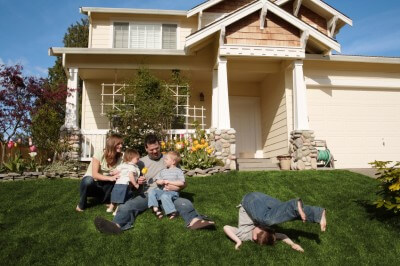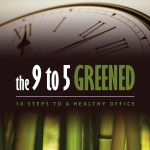
Recent EPA studies indicate that exposure to air pollutants may be two to five times higher indoors than outside. Air pollutants can affect all buildings equally and have many sources, including pets, tobacco products, gas cooking stoves, building materials, paints, cleaning products and pesticides. Exposure to air pollutants can lead to negative health effects like asthma, irritation of the eyes and throat, headaches, dizziness, fatigue and allergic reactions.
Although these circumstances are concerning, you can do many simple things to improve the indoor air quality you and your family are exposed to.
Also consider this: “More and more retail businesses are assimilating ‘greener’ operations in order to satisfy rising consumer demands to go green,” says Scott Hite, chief architect at TD Bank. “As a result, consumers can choose to do business with retailers that build stores that provide good indoor air quality, make an investment in renewable energy and build sustainability to minimize their environmental footprint.”
Here are a few important things to consider:
- Keep it smoke-free. At home, banish smoking indoors and if it hasn’t already been done, ask your boss to do the same at work. Consider doing business with retailers that don’t allow smoking inside or near their businesses in order to keep their customers safe from tobacco smoke, a harmful air pollutant.
- Consider LEED certification. Do your research to find businesses that have pledged to be carbon neutral and are building LEED certified stores. LEED, which stands for Leadership in Energy and Environmental Design, evaluates buildings for their overall performance in indoor environmental quality and four other environmental areas.
- “There a number of retail businesses that have made commitments to building LEED certified structures,” says Hite. “At TD Bank, for example, we made a commitment to be carbon neutral and to build LEED certified green stores that will benefit our customers’ and employees’ overall health.”
- Avoid products with VOCs. Paints, sealers, adhesives and many other building products emit VOCs, volatile organic chemicals. Exposure to these chemicals can cause numerous health effects.
For your home and at work, choose products that have no or low VOCs. Retail businesses that are carbon neutral with green stores also use building materials with no or low VOCs in order to achieve LEED certification.
Choose green cleaning. Harsh cleaning chemicals contribute to poor indoor air quality and can cause adverse health reactions. Instead, choose from a large variety of cleaning products with low toxicity levels. Wherever possible, also store chemicals and cleaning supplies in well ventilated areas.
 Buildings can be healthy through a combination of good technology, the right products, and a healthy dose of good old common sense. Knowing which rules to enforce at home, which products to purchase and choosing retail businesses that are making strides to provide healthier indoor air quality for their customers, can prevent many potential health problems in the future. Looking to create a green workspace? We recommend “The 9 to 5 Greened: 10 Steps to a Healthy Office” available at www.9to5Greened.com.
Buildings can be healthy through a combination of good technology, the right products, and a healthy dose of good old common sense. Knowing which rules to enforce at home, which products to purchase and choosing retail businesses that are making strides to provide healthier indoor air quality for their customers, can prevent many potential health problems in the future. Looking to create a green workspace? We recommend “The 9 to 5 Greened: 10 Steps to a Healthy Office” available at www.9to5Greened.com.



In order to get LEED certification, retail enterprises that are carbon neutral and have green shops also employ construction materials that have no or low levels of volatile organic compounds (VOCs).